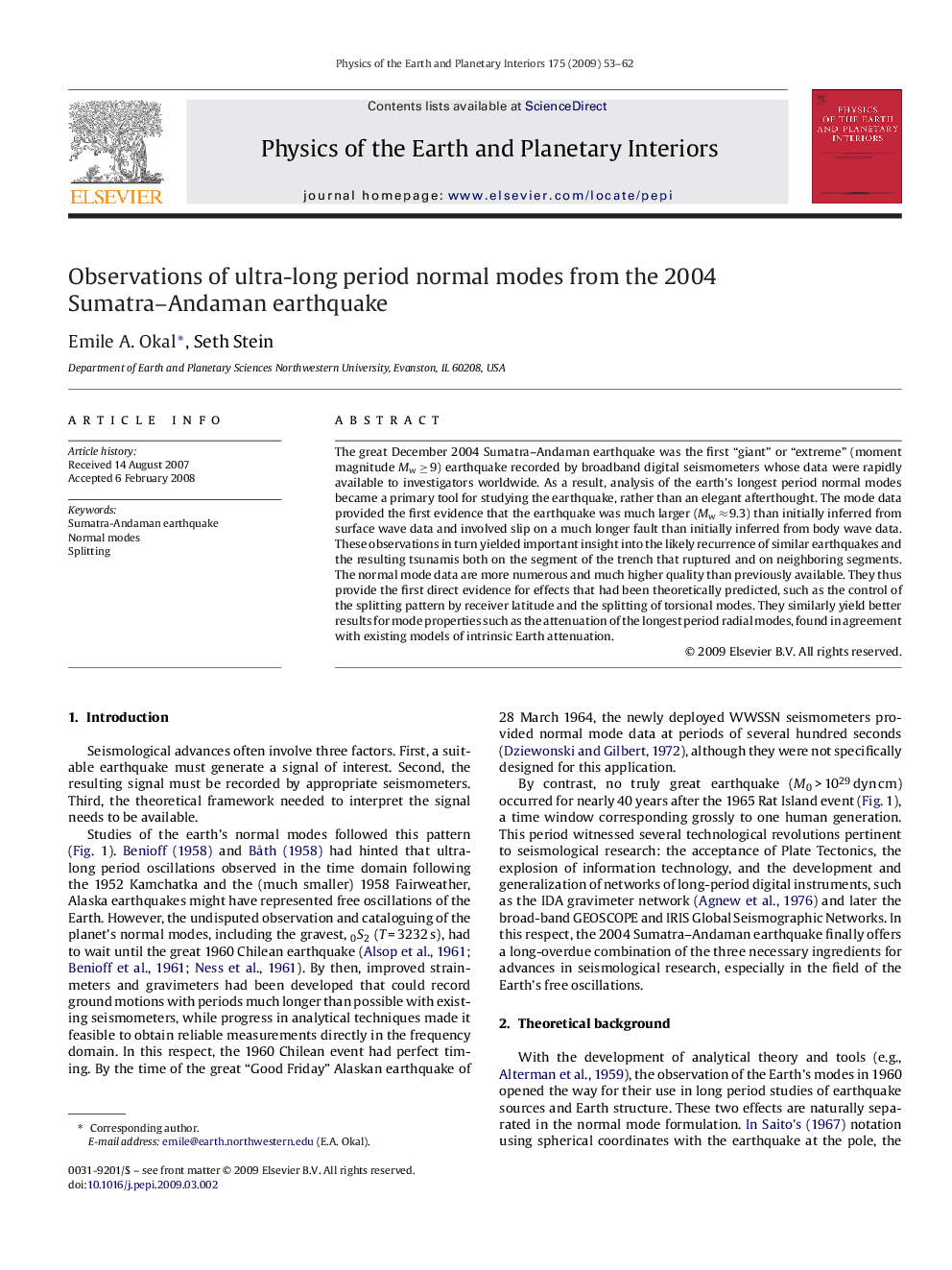| Article ID | Journal | Published Year | Pages | File Type |
|---|---|---|---|---|
| 4742398 | Physics of the Earth and Planetary Interiors | 2009 | 10 Pages |
The great December 2004 Sumatra–Andaman earthquake was the first “giant” or “extreme” (moment magnitude Mw ≥ 9) earthquake recorded by broadband digital seismometers whose data were rapidly available to investigators worldwide. As a result, analysis of the earth's longest period normal modes became a primary tool for studying the earthquake, rather than an elegant afterthought. The mode data provided the first evidence that the earthquake was much larger (Mw ≈ 9.3) than initially inferred from surface wave data and involved slip on a much longer fault than initially inferred from body wave data. These observations in turn yielded important insight into the likely recurrence of similar earthquakes and the resulting tsunamis both on the segment of the trench that ruptured and on neighboring segments. The normal mode data are more numerous and much higher quality than previously available. They thus provide the first direct evidence for effects that had been theoretically predicted, such as the control of the splitting pattern by receiver latitude and the splitting of torsional modes. They similarly yield better results for mode properties such as the attenuation of the longest period radial modes, found in agreement with existing models of intrinsic Earth attenuation.
